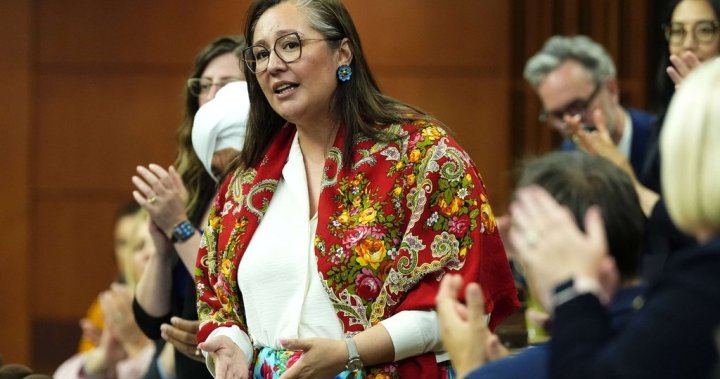As Ottawa tables new First Nations water legislation this week, the age-old tension between federal ambition and provincial jurisdiction has resurfaced with remarkable intensity. Standing at the heart of this debate is more than political positioning—it’s about addressing decades of water insecurity that continues to plague dozens of Indigenous communities across Canada.
Minister of Indigenous Services Patty Hajdu announced yesterday that the government’s long-promised clean water legislation will finally reach Parliament before summer recess. The bill aims to establish enforceable water quality standards on reserves and create sustainable funding mechanisms for water infrastructure—addressing what many First Nations leaders have called a fundamental human rights issue.
“This legislation represents a commitment we made to First Nations partners to ensure every community has access to clean drinking water,” Hajdu told reporters outside the House of Commons. “It’s been developed through years of consultation and reflects Indigenous-led solutions.”
But the path forward appears anything but smooth. Both Alberta Premier Danielle Smith and Ontario Premier Doug Ford have signaled strong opposition, with Smith declaring the bill “an unconstitutional overreach” during a press conference in Edmonton yesterday.
The provincial resistance hinges on jurisdictional concerns. Water management has traditionally fallen under provincial authority, while First Nations communities fall under federal responsibility—creating a complex legal and administrative landscape that has contributed to the persistent water crises.
Chief RoseAnne Archibald of the Assembly of First Nations pointed to the human cost behind the political wrangling. “While governments debate jurisdiction, our people—especially children and elders—continue living with boil water advisories and inadequate infrastructure,” she said during a virtual town hall last week.
The numbers paint a troubling picture. Despite lifting 137 long-term drinking water advisories since 2015, 31 First Nations communities still lack reliable access to clean water. According to Indigenous Services Canada data released last month, some communities have lived under advisories for over two decades.
For Percy Friday, a resident of Kashechewan First Nation in northern Ontario, the political debate feels distant from daily reality. “Every spring, we worry about flooding contaminating our water system,” he told me during a community visit earlier this year. “We’re talking about basic needs that most Canadians take for granted.”
The legislation proposes three key mechanisms: legally binding water quality standards for First Nations communities, sustainable funding formulas that extend beyond political cycles, and a water authority with Indigenous leadership and enforcement powers.
Constitutional experts remain divided on the jurisdictional questions. University of Alberta law professor Barbara Mitchell suggests the federal government is on solid ground. “Section 91(24) of the Constitution Act gives Parliament legislative authority over ‘Indians, and Lands reserved for the Indians,'” she explained. “The question is whether that extends to comprehensive water regulation.”
Provincial opposition appears partly financial. Ford’s government released a statement emphasizing that “any new federal mandate must come with full federal funding.” Similarly, Alberta’s Environment Ministry spokesperson confirmed they’re concerned about “downloading responsibilities without accompanying resources.”
The legislation emerges against a backdrop of Canada’s 2021 commitment to settle a class-action lawsuit filed by First Nations who suffered under long-term drinking water advisories. That settlement—worth $8 billion—acknowledged federal negligence but didn’t address the structural issues the new legislation aims to tackle.
Meanwhile, communities like Neskantaga First Nation in northern Ontario have endured Canada’s longest drinking water advisory—26 years and counting. Chief Wayne Moonias has expressed cautious optimism about the legislation but remains skeptical after decades of broken promises.
“We’ve heard grand announcements before,” Moonias said at a recent water rights symposium in Thunder Bay. “What matters is whether this creates actual change on the ground, not just another layer of bureaucracy.”
Technical concerns also linger. The bill proposes national standards that would override the patchwork of provincial regulations currently in place. Engineering assessments commissioned by Indigenous Services Canada last year identified approximately $4.5 billion in immediate infrastructure needs, with additional long-term maintenance requirements.
Former Parliamentary Budget Officer Kevin Page raised concerns about implementation timelines. “The government’s fiscal framework doesn’t appear to account for the full cost of this initiative,” he noted in an analysis published by the Institute of Fiscal Studies and Democracy.
As debate intensifies, some Indigenous advocates worry that legitimate concerns about implementation could be weaponized to maintain an unacceptable status quo. Autumn Peltier, the young Anishinaabe water activist from Wiikwemkoong First Nation, put it bluntly: “Clean water isn’t political—it’s a human right.”
The legislation’s fate remains uncertain as it enters parliamentary debate. While the Liberal government can likely secure enough votes for passage, effective implementation will require provincial cooperation and sustained funding.
For communities waiting for their taps to run clean, the political theater playing out in Ottawa, Toronto and Edmonton feels removed from their daily struggle. As Percy Friday told me before I left Kashechewan: “We just want what everyone else has—water we can drink without worry.”






